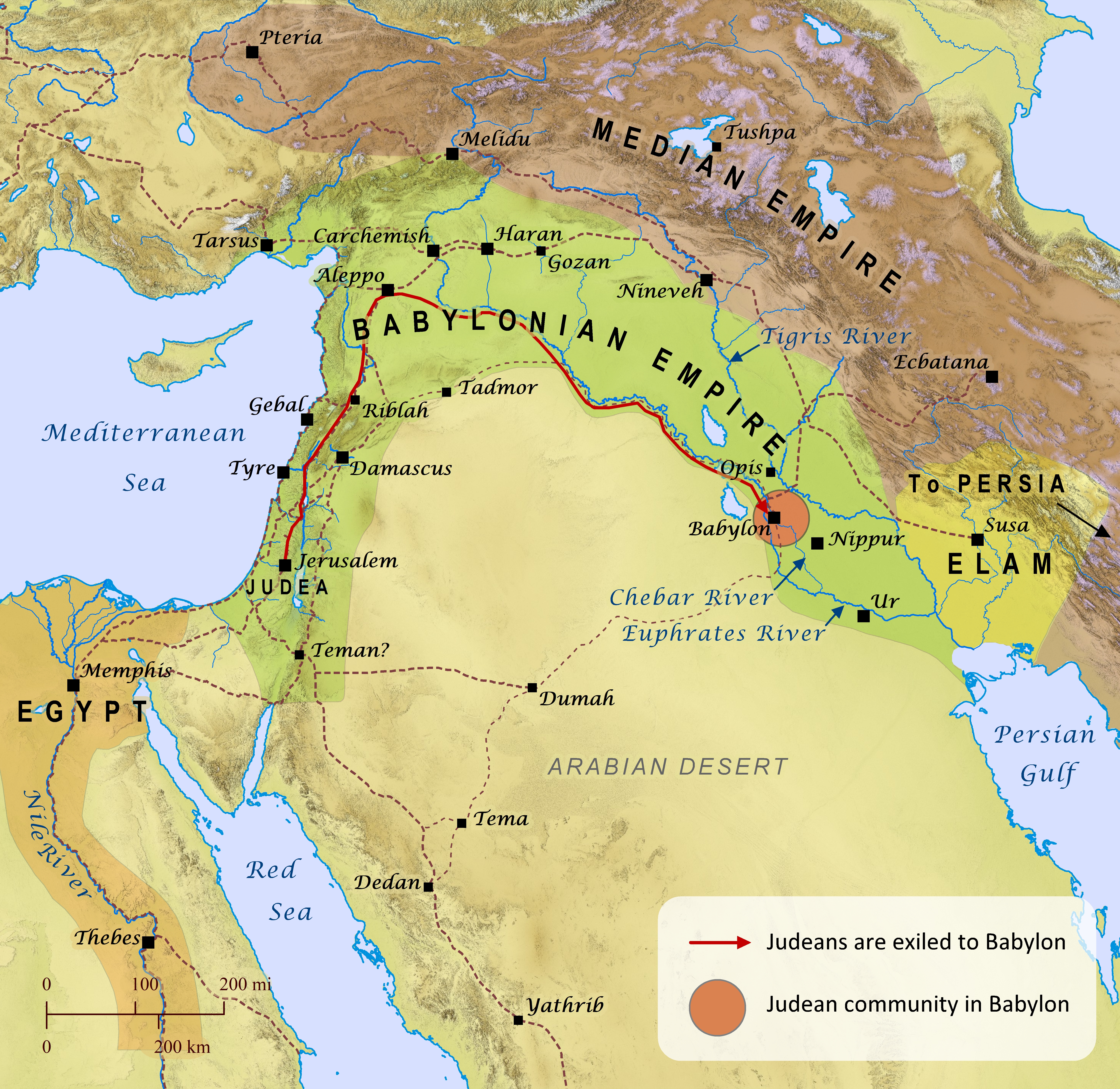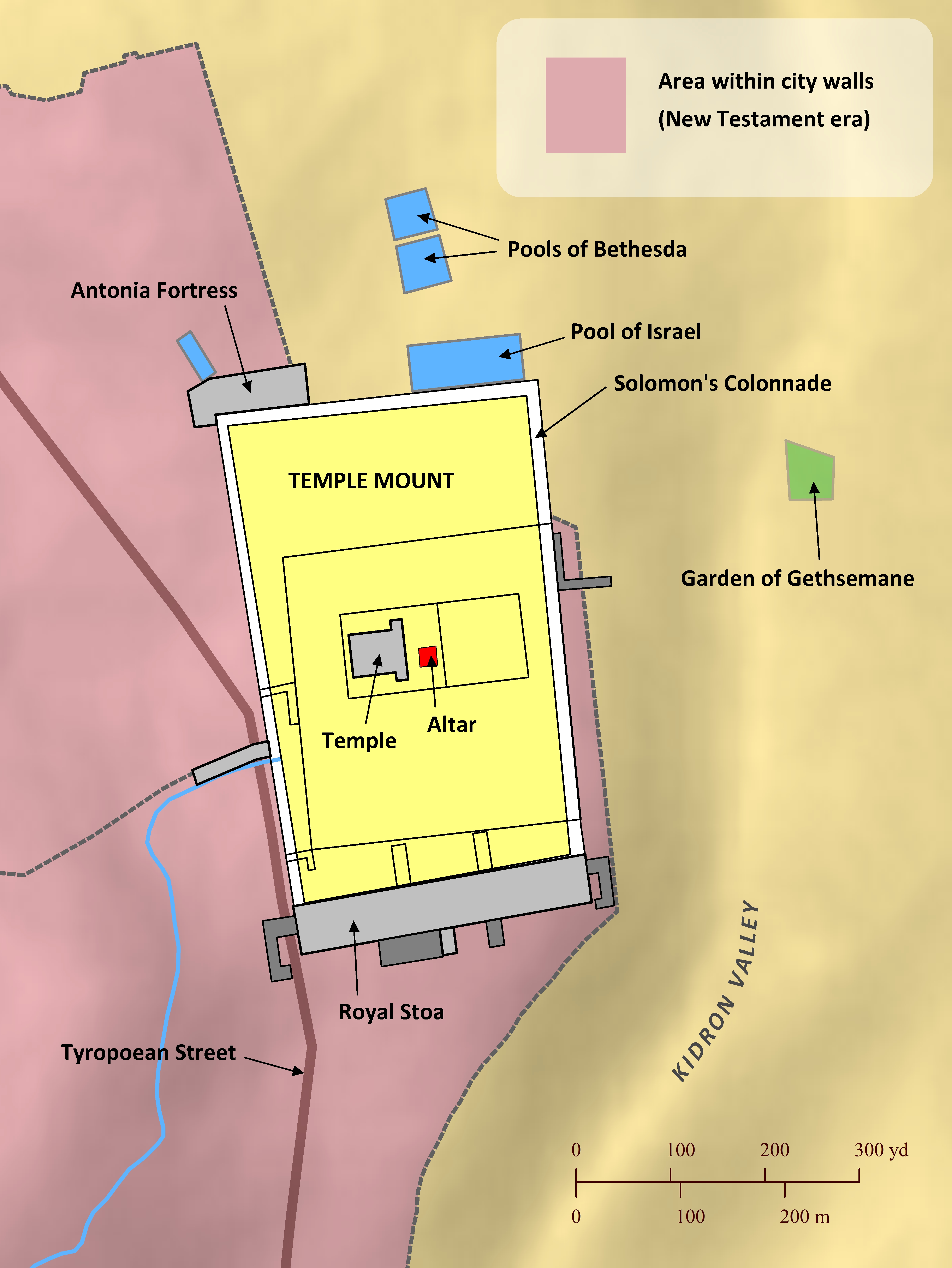Note: This view shows ‘verses’ which are not natural language units and hence sometimes only part of a sentence will be visible—click on any Bible version abbreviation down the left-hand side to see the verse in more of its context. Normally the OET discourages the reading of individual ‘verses’, but this view is only designed as a tool for doing comparisons of different translations—the older translations are further down the page (so you can read up from the bottom to trace the English translation history). The OET segments on this page are still very early looks into the unfinished texts of the Open English Translation of the Bible—please double-check these texts in advance before using in public.
OEB No OEB JER book available
WEBBE All the army of the Chaldeans, who were with the captain of the guard, broke down all the walls of Jerusalem all around.
WMBB All the army of the Kasdim, who were with the captain of the guard, broke down all the walls of Jerusalem all around.
NET The whole Babylonian army that came with the captain of the royal guard tore down the walls that surrounded Jerusalem.
LSV and all the forces of the Chaldeans that [are] with the chief of the executioners have broken down all the walls of Jerusalem.
FBV The whole Babylonian army under the commander of the guard knocked down all the walls around Jerusalem.
T4T Then he supervised the soldiers from Babylonia while they tore down the walls on all sides of Jerusalem.
LEB And all the army of the Chaldeans who were with the captain of the guard[fn] broke down all the walls of Jerusalem all around.
BBE And the walls round Jerusalem were broken down by the Chaldaean army which was with the captain.
Moff No Moff JER book available
JPS And all the army of the Chaldeans, that were with the captain of the guard, broke down all the walls of Jerusalem round about.
ASV And all the army of the Chaldeans, that were with the captain of the guard, brake down all the walls of Jerusalem round about.
DRA And all the army of the Chaldeans that were with the general broke down all the wall of Jerusalem round about.
YLT and all the walls of Jerusalem round about broken down have all the forces of the Chaldeans that [are] with the chief of the executioners.
Drby And all the army of the Chaldeans, that were with the captain of the body-guard, broke down all the walls of Jerusalem round about.
RV And all the army of the Chaldeans, that were with the captain of the guard, brake down all the walls of Jerusalem round about.
(And all the army of the Chaldeans, that were with the captain of the guard, brake down all the walls of Yerusalem round about. )
SLT And all the walls of Jerusalem round about, all the strength of the Chaldees which were with the chief of the cooks, brake down.
Wbstr And all the army of the Chaldeans, that were with the captain of the guard, broke down all the walls of Jerusalem on every side.
KJB-1769 And all the army of the Chaldeans, that were with the captain of the guard, brake down all the walls of Jerusalem round about.
(And all the army of the Chaldeans, that were with the captain of the guard, brake down all the walls of Yerusalem round about. )
KJB-1611 And all the armie of the Caldeans that were with the captaine of the guard, brake downe all the walles of Ierusalem round about.
(Modernised spelling is same as from KJB-1769 above, apart from punctuation)
Bshps And the whole hoast of the Chaldees that were with the chiefe captayne, brake downe all the walles of Hierusalem rounde about.
(And the whole host/army of the Chaldees that were with the chief captain, brake down all the walls of Yerusalem round about.)
Gnva And al the armie of the Caldeans that were with the chiefe steward, brake downe all ye walles of Ierusalem round about.
(And all the army of the Chaldeans that were with the chief steward, brake down all ye/you_all walls of Yerusalem round about. )
Cvdl And the whole hoost of the Caldees yt were with the chefe captayne, brake downe all the walles of Ierusalem rounde aboute.
(And the whole host/army of the Chaldees it were with the chief captain, brake down all the walls of Yerusalem round about.)
Wycl And al the ost of Caldeis, that was with the maistir of chyualrie, distriede al the wal of Jerusalem bi cumpas.
(And all the ost of Chaldees, that was with the mayest/mayir of chyualrie, destroyed all the wall of Yerusalem by compass/all_around.)
Luth Und das ganze Heer, der Chaldäer, so bei dem Hauptmann war, rissen um alle Mauern zu Jerusalem ringsumher.
(And the whole/all army, the/of_the Chaldeans, so at/in to_him captain/leader was, rissen around/by/for all walls to/for Yerusalem ringsumher.)
ClVg et totum murum Jerusalem per circuitum destruxit cunctus exercitus Chaldæorum qui erat cum magistro militiæ.
(and whole wall Yerusalem through surroundings destroyed all army Chaldæorum who was when/with moretro militiæ. )
RP-GNT No RP-GNT JER book available
BMM BibleMapper.com Maps:

Daniel 1; 2 Kings 24-25; 2 Chronicles 36; Jeremiah 39; 52
One of the most significant events in the story of the Old Testament is the exile of Judah to Babylon in 586 B.C. This event–actually the third in a series of exiles to Babylon (the others occurring in 605 B.C. and 597 B.C.)–precipitated several crises in the nation and in Judaism. The northern kingdom of Israel had already been exiled to Assyria over a century earlier in 722 B.C. (2 Kings 15:29; 17:1-6; 1 Chronicles 5:26; see also “Israelites Are Exiled to Assyria” map), and in some ways that exile was even more devastating. Nevertheless, the Temple of the Lord remained intact in Jerusalem as a place where the faithful could continue to offer their sacrifices. With the destruction of Jerusalem and the Temple of the Lord at the hands of the Babylonians, however, sacrifices could no longer be offered at the Tabernacle or Temple of the Lord (Leviticus 17:2-4; Deuteronomy 12:5-7), and the Lord’s promise to provide a land for his people and a descendant on the throne of David no doubt seemed abandoned. At the same time, however, the Judean exiles were allowed to maintain their religious traditions in Babylon, and many even began to thrive there, including Daniel and his friends, who served at the royal court (Daniel 1; see also “The Land of Exile” map). One of the last kings of Babylon expanded Babylonia further by capturing the desert oases of Dumah, Tema, Dedan, and Yathrib (see “Oases of the Arabian Desert” map), but eventually the Median Empire to the north merged with the Persian Empire to the southeast and conquered the Babylonian Empire. King Cyrus of Persia then decreed that the exiled Judeans, now called “Jews,” could return to their homeland if they desired (2 Chronicles 36:22-23; Ezra 1-2; see also “Jews Return from Exile” map).

Temple of the Lord
The Temple of the Lord in Jerusalem, where all Israelite males were commanded to offer sacrifices to the Lord (Exodus 23:14-19; Deuteronomy 16:16-17), underwent several stages of reconstruction and development over hundreds of years. The first Temple was built by King Solomon to replace the aging Tabernacle, and it was constructed on a threshing floor on high ground on the north side of the city (2 Samuel 24; 1 Chronicles 21). Hundreds of years later King Hezekiah expanded the platform surrounding the Temple. When Jerusalem fell to the Babylonians in 586 B.C., the Temple was completely destroyed (2 Kings 25:1-21; 2 Chronicles 36:17-21; Jeremiah 39:1-10; 52:1-30). It was rebuilt in 515 B.C. after a group of Jews returned to Judea from exile in Babylon (Ezra 1:5-6:15; Nehemiah 7:5-65). Herod the Great completely rebuilt and expanded the Temple once again around 20 B.C., making it one of the largest temples in the Roman world. Jesus’ first believers often met together in Solomon’s Colonnade, a columned porch that encircled the Temple Mount, perhaps carrying on a tradition started by Jesus himself (John 10:23; Acts 3:11; 5:12). But Herod’s Temple did not last long: After many Jews revolted against Rome, the Romans eventually recaptured Jerusalem and destroyed the Temple in A.D. 70.

